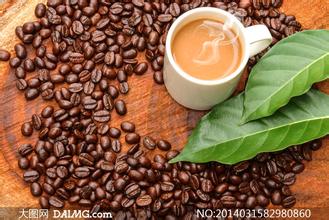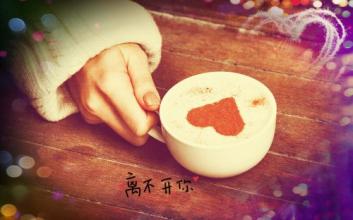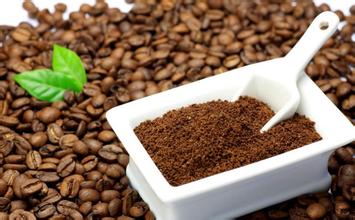Hand brewed coffee water powder proportion step diagram-hand brewed coffee tutorial
Step diagram of hand-made coffee gouache proportion-hand-made coffee course

Water temperature: boiling water into the cool hand pot is basically about 95 degrees, at this time to grind beans (I use electric mill, hand or grind first …... As DIMLAU said, 95 degrees starts steaming, and when you flush, the water in the pot can start to flush at about 90 degrees. Basically, the water temperature is always in the right state, and you don't have to worry about it without a thermometer.
Powder-water ratio: for those who are too lazy to understand the golden cup, please read the boldface directly. Citing the rule of the fool's version of the golden cup (temporarily based on the American version of the gold cup, based on the average concentration and average extraction rate of American black coffee drinkers' favorite range of nearly 10,000 random samples), the data is 1.15% to 1.35%, and the extraction rate is 18% to 22%. In the stupid version, then what can we control? The ratio of powder to water, the mid-point recommended brewing ratio of SCAA's golden cup rule is 1buzz 18.18SCAE midpoint 1RV 16.6666666, but due to the diversity of brewing methods, and when the roasting degree of modern boutique coffee is generally not deep (not easy to extract) or pay more attention to the extraction of sweet and sour front flavor (tend to low extraction rate). For example, the use of bypass (a large amount of powder extraction before the flavor is injected with water to the appropriate concentration), so the average extraction rate is not enough, so it is recommended to use 1:16 (1 g coffee powder corresponds to 16ml water). Under this powder-to-water ratio, the extraction rate is low and it is easier to reach a concentration of 1.15% to 1.35%.
Steaming: the first part of steaming is actually strong enough for the water to come into full contact with the coffee powder, exhaust the gas, and infiltrate the coffee powder to facilitate subsequent extraction. So there's no stick? There is a Tilafa, but you can't do it? You look good enough to wet the coffee powder. Japanese brewing will be steamed to only one drop, or not dripping and fully infiltrating, it is useless to tell you, scientifically speaking, it is just enough contact with powder and water. BUT, don't let the water stay too much. Due to the exuberant discharge of the gas, the steaming water is difficult to extract the water solution in the coffee. Too much steaming and dripping means less water that can be extracted normally.
Segmented extraction: in fact, it is water injection. In the video, the main variables that mainly rely on immersion extraction are grinding degree and soaking time. Water injection only needs to pay attention to the fact that coffee powder is soaked, and whether the circle is round or not. Whether the water flow is fine or not can be ignored. About 20g powder, so we only need to control the total extraction time at two and a half to three minutes, the general extraction rate will not be too biased, during which time it is horse step water injection or handstand water injection. There are too many contents in detail, and the experimental data can be used as a reference value. According to the experimental data of CBC Cooking Institute, the best cooking time for 60 g coffee powder corresponding to 1000ml water is 4: 6 minutes (without steaming) because the spoiling capacity of hand flushing is generally lower than that of the American trickling filter, so 6 minutes is recommended as the reference time. So, for example, the reference value of my 400ml water is 6 minutes X 0.4 minutes 2 minutes 24 seconds. For example, after steaming 24g coffee powder (the midpoint ratio of SCAE gold cup) with 400ml water, the remaining water can be injected evenly in 2 minutes and 24 seconds and the water can basically be in the range of gold cup.
Important Notice :
前街咖啡 FrontStreet Coffee has moved to new addredd:
FrontStreet Coffee Address: 315,Donghua East Road,GuangZhou
Tel:020 38364473
- Prev

What scale powder should be used for Italian coffee grinding? shelf life after grinding
Italian coffee grinding with what scale powder after coarse and fine grinding coffee shelf life the shelf life mentioned in the packaging of general coffee means that the aroma components of coffee can be retained to a certain extent. Not when the coffee may go bad. Because coffee is different from ordinary food, its humidity is very low and it is not easy to deteriorate. The length of waste coffee residue after making coffee.
- Next

How to make cappuccino fancy coffee
How to make cappuccino fancy coffee introduce the fragrance of green tea draws our attention back from a distant country. Japan is a nation that is good at absorption and integration. This time, they have found a balance between western coffee and oriental green tea, and also provide tea lovers with a new favorite green tea coffee. This is a pure Japanese style.
Related
- Beginners will see the "Coffee pull flower" guide!
- What is the difference between ice blog purified milk and ordinary milk coffee?
- Why is the Philippines the largest producer of crops in Liberia?
- For coffee extraction, should the fine powder be retained?
- How does extracted espresso fill pressed powder? How much strength does it take to press the powder?
- How to make jasmine cold extract coffee? Is the jasmine + latte good?
- Will this little toy really make the coffee taste better? How does Lily Drip affect coffee extraction?
- Will the action of slapping the filter cup also affect coffee extraction?
- What's the difference between powder-to-water ratio and powder-to-liquid ratio?
- What is the Ethiopian local species? What does it have to do with Heirloom native species?

